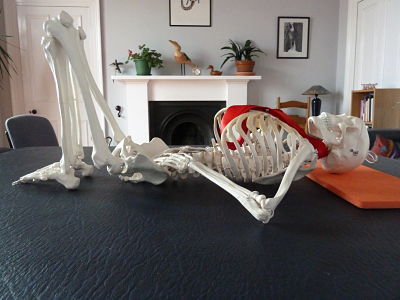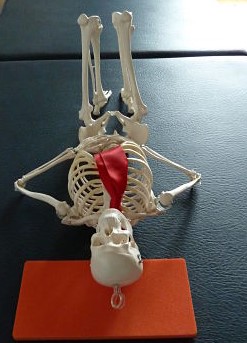 Are you familiar with the daily Alexander Technique lie-down practice that is also known as ‘active rest’ or ‘semi-supine’? If you are, the next time that you are doing it, you might like to listen to this accompanying talk-through that I have recorded:
Are you familiar with the daily Alexander Technique lie-down practice that is also known as ‘active rest’ or ‘semi-supine’? If you are, the next time that you are doing it, you might like to listen to this accompanying talk-through that I have recorded:
If you want to download it, just click on the three dots icon.
And, this is what you need to know if you’re not already familiar with the practice:
Active rest provides a wonderful, restorative opportunity to allow our busy mind-bodies to quieten so that we can become more present and self-aware, and explore some Alexander thinking. Ideally, we make it into a daily practice of around 10−20 minutes.
You will need:
- A firm, warm surface to lie on – floor covered with a rug, carpet or yoga mat.
- Some paperback books to support your head when lying down – most people will need several books (total height of around 5–10 cm).
- Experiment to find what suits you – if it’s too low your head will tilt back, and if it’s too high your throat will feel constricted – if the books feel too hard, cover them with a small soft cloth.
Getting to the ground
- In standing, take a moment to simply notice the space around you and the support coming up through your feet from the ground.
- There’s no rush, take your time to come to the ground aiming to stay in balance throughout.
- Once on the floor, gently roll over onto one side and then onto your back with your head on the books, your feet resting flat on the floor and your knees pointing towards the ceiling.
- The back of your head (not any part of your neck) should be resting on the books.
- Bring your hands to rest on your hip bones, abdomen or chest, wherever comfortable.
- Take some time to allow yourself to arrive and settle in this new position, quietly noticing what’s around you.
While you’re there
- Listen to the talk through to give you some ideas of what it’s all about.
Getting up
- It’s really important to take your time in getting yourself up – you want to make it as easy as possible for yourself.
- A good way to begin getting up is to roll over onto your side, come onto all fours, then into kneeling, and then stand up while giving a thought to the space above you.
Things to note
- If you have any issues with balance or mobility, you might want to have something next to you (e.g. a chair) to aid in getting to and from the ground. Only do what you feel confident about – if in doubt first seek advice from an Alexander teacher.
- It is important that you are comfortable in this position – bear in mind that it can take a little bit of getting used to at first, so do keep with it. However, if you experience either new or increased pain, give it a miss for now and discuss it with an Alexander teacher.
- If at any time during your lying down you become uncomfortable, do get yourself up, as you won’t gain any further benefit by staying longer. It may be better to do several short lie-downs in a day until you get more used to it.
- If it seems to be an effort to allow your knees to balance freely, either let them rest against each other for a while or try the variation of lying in the same position but with your lower legs and feet resting on the seat of a chair.
- Find out more by booking an introductory lesson with a local teacher – How to find an Alexander teacher who suits you.


